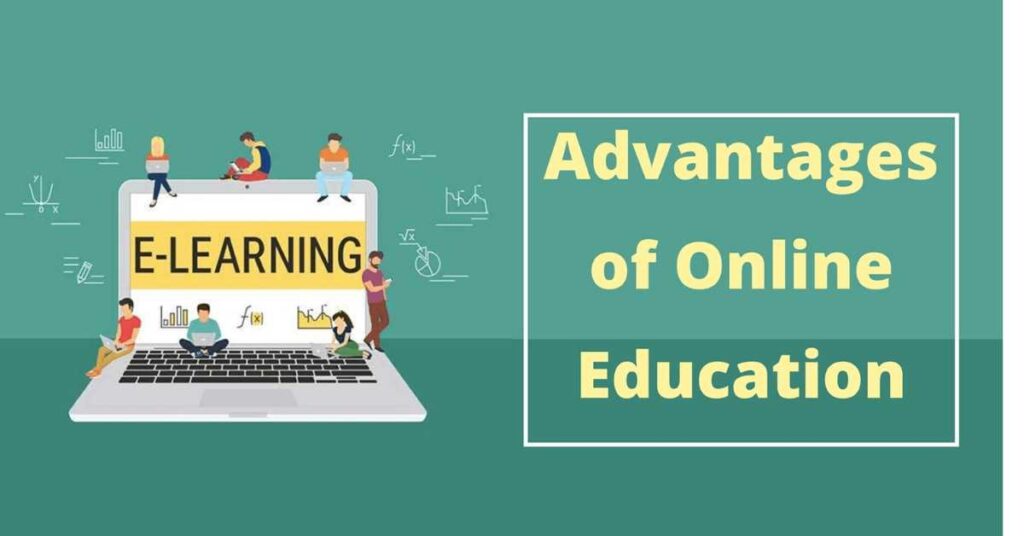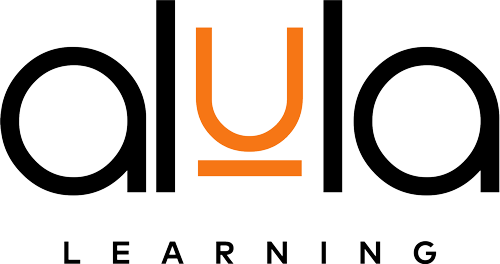Top Learning Design Trends to Watch for in 2025

Top Learning Design Trends to Watch for in 2025: The convergence of technology, innovation, and learner needs has revolutionized how knowledge is shared and absorbed today. As we approach 2025, staying ahead of emerging trends in learning design is vital for educators, instructional designers, and organizations. Before we go into the details of these transformative trends to expect in 2025, we have an exciting opportunity for you! Alula Learning’s Training Program is your gateway to mastering cutting-edge learning design strategies. Don’t miss this chance to take your skills up a notch. Register your interest here. Top Learning Design Trends to Watch for in 2025 1. Gamification Beyond Points and Badges Gamification remains a powerful tool in learning design, but its application is evolving beyond simplistic rewards like points, badges, and leaderboards. In 2025, we’ll see a deeper integration of gamification into the narrative structure of courses, where storytelling becomes a central element. Learners will not just complete tasks; they’ll embark on missions, solve real-world problems, and engage in collaborative challenges. Advanced AI tools will enable personalized gamified experiences, adapting challenges to individual skill levels and learning progress. Key takeaway: To stay competitive, learning designers must master advanced gamification techniques that engage learners on cognitive, emotional, and social levels. 2. AI-Powered Personalized Learning Artificial Intelligence (AI) is no longer a buzzword, it’s a now a game-changer in education. AI-driven systems can analyze learners’ behavior, preferences, and performance to deliver tailored content that meets their specific needs. Expect adaptive learning platforms to become the norm, offering personalized pathways for learners. AI will also enable real-time feedback, guiding learners more effectively and freeing up educators to focus on higher-level mentoring. Key application: Incorporating AI into learning design can enhance engagement and outcomes by ensuring content is relevant and delivered at the right pace for each learner. 3. Microlearning for Time-Constrained Learners In a world where attention spans are shrinking, microlearning continues to thrive. Bite-sized content designed for on-the-go learning will dominate in 2025. However, microlearning will go beyond static modules; expect interactive formats such as quick simulations, quizzes, and short immersive videos.This trend aligns perfectly with busy professionals seeking knowledge without committing to lengthy courses. Pro Tip: Modular training designs that allow learners to pick and choose specific microlearning topics will be a significant draw. 4. Augmented Reality (AR) and Virtual Reality (VR) AR and VR are reshaping how we interact with learning materials. By 2025, these technologies will be more accessible and integrated into training programs across industries. What to Watch: As AR and VR tools become affordable, they’ll redefine experiential learning, making it more interactive and impactful. 5. Collaborative Learning in Virtual Spaces With remote work and learning becoming permanent fixtures, virtual collaboration tools are gaining prominence. Learning platforms are integrating features like virtual whiteboards, breakout rooms, and real-time document collaboration. In 2025, we’ll see these tools evolving into metaverse-like platforms, where learners and instructors can interact in shared virtual spaces. These environments will foster teamwork, problem-solving, and innovation. Why it matters: Collaborative learning enhances critical thinking, communication, and teamwork skills, preparing learners for real-world challenges. 6. Data-Driven Learning Design Analytics is becoming an integral part of learning design. By tracking learner interactions, time spent on tasks, and assessment results, designers can refine courses to maximize effectiveness. Learning analytics platforms will evolve to provide predictive insights, allowing designers to proactively adjust content and strategies based on trends. Action Point: Designers must become adept at interpreting data and using it to enhance learner experiences. 7. Inclusion and Accessibility Diversity, Equity, Inclusion, and Accessibility (DEIA) will continue to drive innovation in learning design. In 2025, more organizations will prioritize designing content that accommodates various learning needs, including neurodiverse learners and those with disabilities.This trend also aligns with the rise of Universal Design for Learning (UDL), which advocates for flexible learning environments that cater to all. Design Tip: Use accessible technologies like screen readers, captions, and adaptive interfaces to ensure inclusivity in your learning materials. 8. Hybrid Learning Models Blended learning models combining online and in-person elements are here to stay. In 2025, hybrid learning will shift towards greater flexibility, allowing learners to seamlessly switch between modalities based on their schedules and preferences.For example, a training program might offer live sessions, self-paced modules, and on-demand resources in one integrated platform. Why it’s critical: Hybrid learning provides the best of both worlds, catering to diverse learner needs while maintaining engagement. 9. Focus on Soft Skills As automation and AI take over routine tasks, soft skills like critical thinking, emotional intelligence, and creativity are becoming indispensable.Expect a surge in courses designed to teach these skills through scenario-based learning, simulations, and peer feedback systems. Soft skills training will be woven into technical courses, ensuring a holistic approach to learning. Takeaway: Incorporate soft skills training into your offerings to prepare learners for future job demands. 10. Sustainability in Learning Design Sustainability isn’t just a corporate buzzword; it’s influencing education too. Green learning design practices, such as reducing reliance on paper-based materials and leveraging energy-efficient platforms, will gain traction.Additionally, courses focused on sustainability topics will be in high demand as businesses and governments prioritize climate literacy. Forward-Thinking: Integrate sustainability into both content delivery and subject matter to align with global priorities. 11. Lifelong Learning Ecosystems The concept of lifelong learning is gaining momentum, and in 2025, we’ll see organizations and institutions creating ecosystems that support continuous education.These ecosystems will include microcredentials, stackable certifications, and pathways for upskilling and reskilling throughout a learner’s career. Next Steps: Embrace a learner-centric approach, creating programs that grow with your audience’s evolving needs. 12. Social Learning through Communities Learners thrive in communities where they can share experiences, challenges, and solutions. Social learning platforms will continue to grow, offering forums, live discussions, and peer mentoring opportunities.In 2025, expect AI-driven community management tools that recommend discussions, connections, and resources based on individual learner profiles. Design Insight: Foster active learner communities within your programs to enhance engagement and retention. Elevate Your Learning Design Skills Today! These
Gamification in Learning: How to Engage Learners Like Never Before

Gamification in Learning: Today, traditional learning methods often struggle to hold the attention of learners. This is where gamification comes in. Gamification is a revolutionary approach that has transformed how we learn, teach, and engage with content. Whether you’re a student, teacher, corporate trainer, or e-learning platform developer, gamification offers tools and techniques that can make learning fun, effective, and highly engaging. In this blog post, we will explore what gamification is, why it’s effective, examples of its application, and best practices for leveraging it in your learning environment. However, before we go on, If you’re an educator, corporate trainer, or learning enthusiast eager to unlock the potential of gamification, Alula Learning invites you to a Free Webinar on Gamification. This exciting session will explore how gamified strategies can enhance learner engagement and outcomes. Don’t miss this opportunity to learn from industry experts and take your teaching or training to the next level. Register now to secure your spot! What is Gamification? Gamification is the integration of game elements and principles into non-gaming contexts to drive engagement, motivation, and participation. It’s not about turning a lesson into a full-fledged video game but about incorporating game-like features, such as: – Points and score to reward progress – Badges and achievements to recognize milestones – Leaderboards to foster competition and collaboration – Challenges and missions to provide a sense of purpose – Levels to create a progression system By embedding these elements into learning experiences, educators and organizations can transform otherwise mundane or complex tasks into enjoyable and rewarding activities. Why is Gamification Effective? To understand the impact of gamification, we must delve into the psychology behind it. Gamification taps into basic human desires, such as: 1. Achievement and Mastery Gamification provides learners with clear goals and rewards for achieving them. The sense of accomplishment from earning a badge or leveling up triggers a release of dopamine, which reinforces positive behaviors. 2. Competition and Social Connection Leaderboards and multiplayer features appeal to our competitive instincts while encouraging teamwork and collaboration. Healthy competition can drive learners to push their boundaries and engage more deeply with the content. 3. Instant Feedback Traditional learning methods often involve delayed feedback, which can demotivate learners. Gamification offers immediate feedback, enabling learners to track their progress and correct mistakes in real time. 4. Storytelling and Immersion Gamified systems often include narratives or themes that captivate learners. These stories make lessons more relatable and memorable, helping learners connect emotionally with the material. 5. Autonomy and Exploration Games encourage exploration and experimentation. Learners can choose how they approach challenges, making the experience feel more personalized and empowering. Real-World Applications of Gamification Gamification has found its way into various fields, proving its versatility and effectiveness. Here are some notable examples: 1. Education Platforms like Kahoot! and Duolingo have redefined learning by gamifying quizzes, language lessons, and more. For instance, Duolingo uses streaks, levels, and rewards to motivate users to practice languages daily. 2. Corporate Training Companies like Deloitte use gamified platforms to train employees in leadership and soft skills. By integrating leaderboards and challenges, employees stay engaged and motivated to complete their training programs. 3. Health and Fitness Apps like Nike Run Club and Fitbit gamify exercise by incorporating badges, challenges, and social leaderboards to keep users motivated to stay active. 4. Customer Engagement Brands such as Starbucks use gamification in their loyalty programs. Starbucks Rewards lets customers earn stars for purchases, which can be redeemed for free items, turning coffee purchases into a fun, rewarding experience. 5. E-Learning and Professional Development E-learning platforms like Coursera and Codecademy use gamified progress tracking, certificates, and peer competition to encourage course completion. Tools and Platforms for Gamification Several tools and platforms can help you implement gamification in learning environments. Here are some popular options: – Classcraft: Turns classrooms into role-playing games where students earn points for good behavior and academic achievements. – Quizizz: Enables educators to create interactive quizzes with game-like elements. – Habitica: A gamified productivity app that lets users turn tasks and goals into a game. – Moodle: An open-source learning management system that supports gamification plugins. – GameSalad: Helps educators create educational games without programming knowledge. The Future of Gamification in Learning The potential of gamification is immense, and its future looks promising. With advancements in technology such as virtual reality (VR), augmented reality (AR), and artificial intelligence (AI), gamified learning experiences are becoming more immersive and adaptive. Imagine virtual classrooms where students interact with historical figures in real-time or corporate training sessions that simulate real-world scenarios using AR. As gamification continues to evolve, it will play a pivotal role in reshaping how we learn, making education more inclusive, engaging, and effective. Conclusion Gamification has proven to be a powerful tool for engaging learners in ways traditional methods cannot. By blending fun with functionality, it creates an environment where learners are motivated to participate, challenge themselves, and grow. Are you ready to learn how to implement these game-changing strategies? Join Alula Learning’s Free Webinar on Gamification to discover practical techniques and tools for transforming learning experiences. This webinar is perfect for educators, trainers, and learning professionals who want to stay ahead of the curve. Click here to register now and start engaging learners like never before! Gamification in Learning:
Why E-Learning is a Cost-Effective Solution for Training

Why E-Learning is a Cost-Effective Solution: Have you ever had to explain to a boss or client why choosing E-Learning for personnel training—or any training or learning in general—is a lot more cost-effective? In our first session of the E-Learning Train program, our Head of Learning at Alula Learning emphasized several key factors that make E-Learning not only an affordable option but also a superior method for achieving long-term educational and training goals. Here are some of the insights, highlighting why E-Learning should be at the forefront of every organization’s training strategy. 1. Reduction in Travel and Accommodation Costs Traditional classroom-based training often requires employees or learners to travel, sometimes across cities or even countries, to attend sessions. This involves significant expenses for travel, accommodation, and sometimes meals, especially if the training lasts several days. In contrast, E-Learning eliminates the need for travel entirely. Learners can access the course material from anywhere, whether it’s from the comfort of their homes or the convenience of their offices. The savings from avoiding these logistical costs can be substantial, particularly for large organizations with a geographically dispersed workforce. 2. Minimized Disruption to Productivity Traditional training often necessitates that employees take time away from their daily responsibilities, which can lead to disruptions in productivity. Businesses lose out on valuable work hours as employees travel to and attend in-person training sessions. E-Learning, on the other hand, offers flexibility. Employees can engage with training modules during downtime, after hours, or in a way that fits seamlessly into their work schedule. This flexibility helps maintain productivity levels while ensuring that learning is happening concurrently. 3. Scalability One of the most compelling advantages of E-Learning is its scalability. Whether you’re training a group of 10 or 10,000, E-Learning platforms can accommodate a large number of participants without significant additional costs. Traditional training methods often require additional instructors, materials, and space as the number of learners increases, leading to escalating costs. E-Learning, however, uses digital content that can be distributed to an unlimited number of participants with minimal extra cost. This scalability makes E-Learning particularly cost-effective for organizations that need to train large teams or that expect to grow rapidly. 4. Consistency in Training Delivery In traditional training, the delivery of content can vary depending on the instructor, the location, or even the mood of the day. This variability can lead to inconsistencies in what learners take away from the training, which can have long-term negative effects on performance. E-Learning ensures that all learners receive the same content, delivered in the same way, ensuring consistency in training. This uniformity not only guarantees that all employees are on the same page but also reduces the need for re-training or corrective measures, thereby saving costs in the long run. 5. Lower Material Costs Traditional training methods often require printed materials, physical workbooks, or manuals. These materials can be expensive to produce, especially if the training content needs frequent updates or is customized for different learners. With E-Learning, all materials are digital. This not only reduces printing costs but also makes it easier and cheaper to update the content. Digital content can be revised and redistributed instantly without the need for reprinting or redistributing physical copies. Over time, the savings on materials alone can be significant. 6. Time Efficiency E-Learning is inherently more time-efficient than traditional methods. Traditional training sessions are often scheduled for a specific time and duration, which may not align with every learner’s pace or learning style. Some learners may find themselves wasting time on content they already understand, while others may need more time to grasp certain concepts. E-Learning allows learners to progress at their own pace, focusing on areas where they need more time and skipping over content they have already mastered. This personalized approach not only makes learning more efficient but also reduces the overall time spent on training, translating into cost savings for the organization. 7. Accessibility and Flexibility The ability to access training anytime and anywhere is one of the most significant benefits of E-Learning. This flexibility means that employees can engage in training when it’s most convenient for them, whether that’s during work hours, at night, or over the weekend. For businesses, this flexibility can mean less downtime, as employees can fit training around their schedules without disrupting business operations. Additionally, E-Learning platforms are often accessible on multiple devices, including smartphones and tablets, further enhancing accessibility and convenience. 8. Long-Term Cost Savings While the initial investment in an E-Learning platform may seem significant, the long-term savings are substantial. Once the digital content is created, it can be used repeatedly with minimal ongoing costs. There are no additional expenses for hiring trainers, booking venues, or printing materials each time a training session is needed. Furthermore, as mentioned earlier, updates to the training content can be made at a fraction of the cost compared to updating traditional training materials. Over time, these savings accumulate, making E-Learning a more cost-effective solution in the long run. 9. Data-Driven Insights and Personalization E-Learning platforms often come with analytics and reporting tools that allow organizations to track the progress and performance of learners in real-time. This data provides valuable insights into how effective the training is, which areas need improvement, and which learners may require additional support. Traditional training methods typically lack this level of detailed feedback, making it harder to measure ROI and make informed decisions about future training investments. The ability to personalize the learning experience based on these insights further enhances the effectiveness and cost-efficiency of E-Learning. 10. Environmentally Friendly Lastly, E-Learning is an environmentally sustainable option. By reducing the need for printed materials, travel, and physical infrastructure, E-Learning significantly lowers the carbon footprint associated with training. For organizations that are committed to sustainability, this reduction in environmental impact is an additional benefit that aligns with corporate social responsibility goals while also cutting costs. Conclusion In conclusion, E-Learning offers a myriad of advantages that make it a cost-effective solution for training and education. From reducing
How to Make Money with Instructional Videos

How to Make Money with Instructional Videos: Are you a tutor, an educational content creator, an instructional designer, or an Edutech startup? Spend the next five minutes reading this guide, and you’ll learn how to monetize your educational videos effectively. We’ll cover various monetization strategies and highlight some of the best platforms for turning your educational content into a profitable venture. If you require further insight after reading this, Alula Learning’s training for instructional designers and e-learning development professionals can help you stay ahead in this booming market by equipping you with the skills to create high-quality, monetizable content. Why Monetize Educational Videos? Monetizing educational videos in 2024 is a smart move. The demand for online education continues to rise, driven by the convenience, flexibility, and accessibility it offers. Studies show that 70% of students prefer online learning over traditional classroom settings. The online education market has grown 900% since 2000 and is projected to reach US$279.30bn by 2029. How to Make Money with Instructional Videos; Monetization Strategies 1. Subscription Model Offer a subscription service where viewers pay a recurring fee to access your content. This model ensures a steady income and fosters long-term viewer engagement. Alula Learning training can teach you how to create engaging and valuable subscription-based content. Pros: – Stable and recurring revenue – Exclusive content and community-building Cons: – Requires consistent production of high-quality content – May limit access for those who cannot afford a subscription 2. Advertisement Incorporate ads into your videos. Advertisers pay to display their products or services, and you earn money based on views or clicks. Pros: – Potential revenue without charging viewers – Passive income with a large audience Cons: – Potentially interruptive to viewers – Fluctuating and uncontrollable ad revenue 3. Pay Per Course Charge a fee for individual courses. This allows you to monetize specific content for learners interested in particular subjects. Pros: – Monetization of individual courses – Control over pricing and revenue Cons: – Continuous creation of new courses needed – Viewer hesitation in paying upfront 4. Selling Additional Content Offer supplementary materials like e-books, workbooks, or study guides for an additional fee. Pros: – Additional revenue streams – Catering to different learning preferences Cons: – Additional time and effort for content creation – Sales dependent on perceived value 5. Affiliate Marketing Partner with brands and promote their products or services. Earn a commission for purchases made through your affiliate links. Pros: – Commission-based revenue without creating products – Recommending relevant products/services Cons: – Success depends on effective promotion – Building trust with the audience 6. Paywall Use platforms that provide various payment options for viewers, simplifying the payment process and expanding your audience. Pros: – Access to a global customer base – Variety of payment methods Cons: – Platform fees and transaction costs – Requires marketing efforts to drive traffic Use platforms that provide various payment options for viewers, simplifying the payment process and expanding your audience. Pros: – Access to a global customer base – Variety of payment methods Cons: – Platform fees and transaction costs – Requires marketing efforts to drive traffic 7. Crowdfunding Engage with your audience by crowdfunding your educational content. Encourage viewers to support your work through donations. Pros: – Direct support from your audience – Funding for specific projects Cons: – Uncertain and variable funding – Requires active promotion and engagement How to Make Money with Instructional Videos: Top Platforms for Monetizing Educational Videos 1. IBM Cloud Video IBM Cloud Video is a powerful platform tailored to the unique needs of the video streaming industry. It enables educators to deliver high-quality video content accessible anytime, anywhere, and on any device. The platform offers customizable branding options, allowing educators to establish a distinct brand identity. Key features include live streaming capabilities for real-time lectures and events, secure video hosting with access controls, digital rights management, and interactive video tools to engage students. IBM Cloud Video provides a cohesive brand identity and a robust solution for educational video monetization. 2. VPlayed VPlayed is an intuitive online video education platform designed for instructors to easily create, manage, and monetize their educational content. It offers multiple monetization options, including pay-per-view, subscriptions, and advertisements, ensuring diverse revenue streams. With built-in analytics, VPlayed helps track content performance and enhance learner engagement. Its fully customizable learning solution makes it an excellent choice for those with extensive educational content seeking a reliable monetization platform. 3. Amazon Amazon, the world’s largest online marketplace, offers a prime platform to sell online courses. With 2.45 billion monthly visits, it’s ideal for reaching a wide audience. Can You Sell a Course on Amazon? Yes, by repackaging your course as: Ebook Video / Video series Audiobook Physical product Digital Products: Educational eBook – Amazon KDP: Convert your course into an e-book via Kindle Direct Publishing. Include discount coupons or links to your multimedia course. Sell Video Course with Prime Video: Use Amazon’s Video Direct to sell or rent your video course, ensuring compliance with Amazon’s guidelines. Audio Lessons as Audiobook with Audible: Record your course as an audiobook for Audible. Hire a voice actor if needed. Physical Products: CD / DVDs: Create limited edition CDs or DVDs of your course. Include access codes for upselling. Utilize Amazon FBA for logistics. Physical Book: Print your ebook as a physical book. Test the market with a limited edition. Other Product + Digital Access Code: Pair physical products with digital access codes, like cookbooks with online classes or fitness merchandise with training videos. Steps to Sell on Amazon: Research the Market & Competition Prepare the Product Create Your Amazon Seller Account Sales Page & Pricing Promote the Course Selling through Amazon FBA offers different logistics from operating your own business, so understand the requirements and costs involved. 4. Dacast Dacast is a versatile video platform catering to educators and EdTech startups. It provides reliable, low-latency video streaming and hosting services, making it ideal for delivering educational content. Dacast’s user-friendly interface allows educators to create engaging
